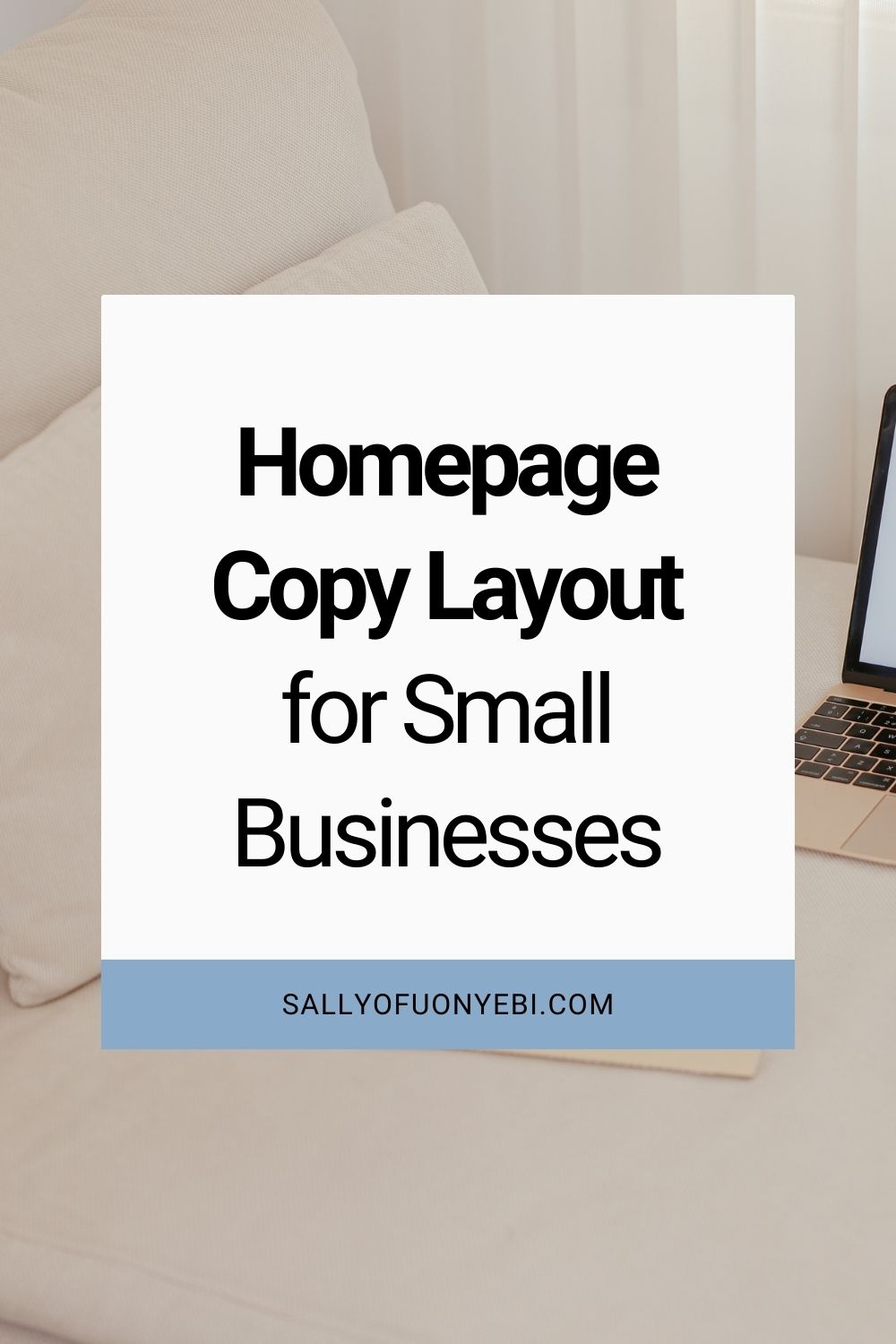How to Write a Homepage for Your Website

Here’s how to write a homepage for your website even if you’re not a copywriter.
In my years of writing copy for entrepreneurs, I’ve learned one thing for sure: your homepage is prime real estate.
It’s often the very first thing someone sees when they type in your domain. You know what they say—first impressions last (for such a long, LONG time).
Most visitors spend about 53 seconds on a site before deciding if they’re staying or clicking away. That’s less than a minute to roll out the welcome mat, pour the metaphorical coffee, and convince them to settle in.
I’ve written enough homepages to know it’s possible to make your dream clients binge your website like their favorite high school series. And in this post, I’m going to show you exactly how I do it.

Why your homepage copy is important
Before we dive into how to write a homepage for your website, here are four reasons you need it.
1. Your homepage gives the first impression
People form an impression about your business—good or bad—based on what’s on your homepage.
If it’s good, you’ll keep their attention and increase your conversions. That’s why you need better homepage content than “uncover your potential.”
You’ll need something unique and more specific to grab the reader’s attention.
2. It removes the overwhelm
Not everyone who lands on your site knows where they’re going.
Your homepage serves as a hub that summarizes and connects to different pages of your site.
This way, you can help your website guests get over decision paralysis to check out what they want.
3. It improves the user experience
When visitors easily navigate your site without feeling stuck, they feel happy with their experience.
In the eyes of search bots, you earn a greater reputation because your UI/UX is seamless.
4. It shows how organized you are
To an extent, your homepage copy and layout will tell a potential client how streamlined your processes are.
Should they design to work with you, they can say if it’d be smooth or messy. At least, this is what I think when I land on website homepages.
Now that you know why your homepage matters, let’s talk about how to write homepage copy that attracts and converts website visitors.
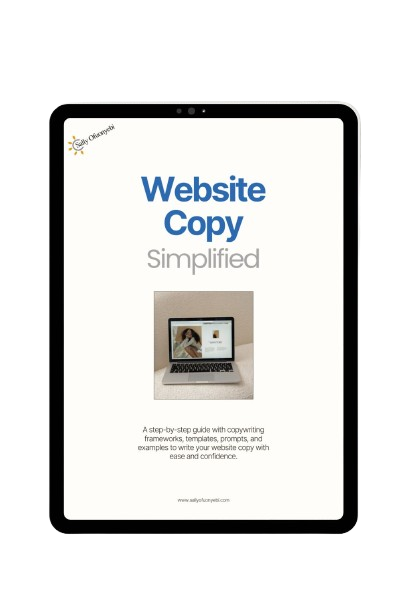
Easy Website Copy Template
Blank screen blues? Not anymore. This plug-and-play website copy template gives you the words, the flow, and the strategy to finally nail your message all by yourself.”
How to write a homepage for your website
Homepage copywriting can sound like one hell of a job, especially if you’re not a copywriter—but lucky for you, I’m here.
All that frustration about where to start, what goes where, and how to write a bomb-ass homepage ends here.
Using my client’s homepage copy structure, MelissaJoy Coaching, as a homepage copywriting example, here’s the copy template you need to write yours.
1. The hero section

This is the very first thing visitors will see when they land on your homepage. So, you need to make this section clear and exciting.
It should be clear because it should immediately let people know what your website is about—that they’re in the right place—and exciting because it should make them scroll further down and continue their quest.
Start by crafting a headline succinctly conveying your brand’s unique value proposition. In Melissa’s case, she wants her audience to break through the limitations holding them back so they can fulfill their dreams.
You can add a subheadline (e.g., ADHD coaching for adults) and subtext (e.g., intensive life…) as seen in her copy for context and keyword optimization.
2. Value walkthrough

You’ll need more than your hero section to tell your ideal clients they are in the right place. This section allows you to reiterate your brand mission to help them achieve their desires.
This is the part to go big on “being relatable.” There’s no one-size-fits-all style for writing the value walkthrough section. You can make yours as succinct as Melissa’s, or if you’re quite the chatterbox (like me), you can make yours as detailed as mine.
Ultimately, your value walkthrough section should convey the “value” you bring to their lives.
3. Mini “About” section
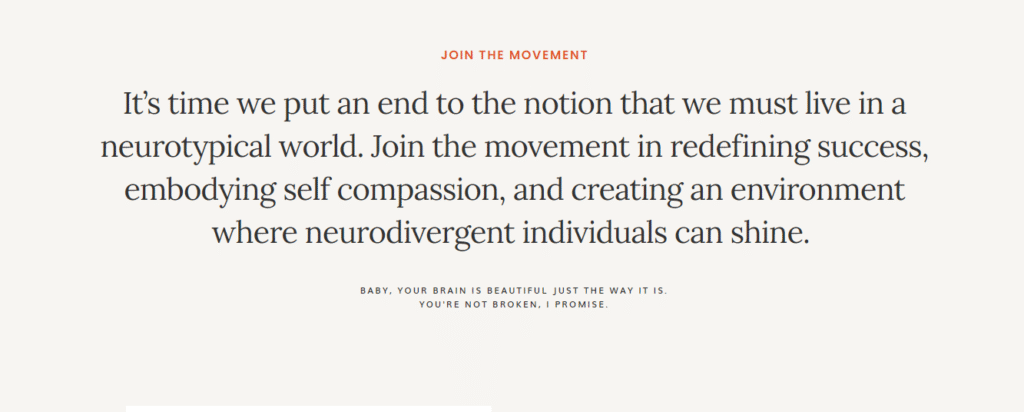
What’s a first date without an introduction?
This little section is where you get to show your audience the face behind the brand so they can feel comfortable and connect with you as a person.
Throw in your personality here. Introduce yourself as you would in real life, with a bit of backstory that points them toward taking a trip to your About page if they want.
4. Social proof


Social proof is necessary to convince your audience that you’re who you say you are. It’s a trust factor that validates your brand and reinforces the interest of people in your message.
This can be in the form of client testimonials, press features, clients’ logos, before & after case images, results stats in figures, and certifications.
Basically, anything that proves your credibility, authority, experience, or expertise qualifies as social proof.
5. Offer featuring
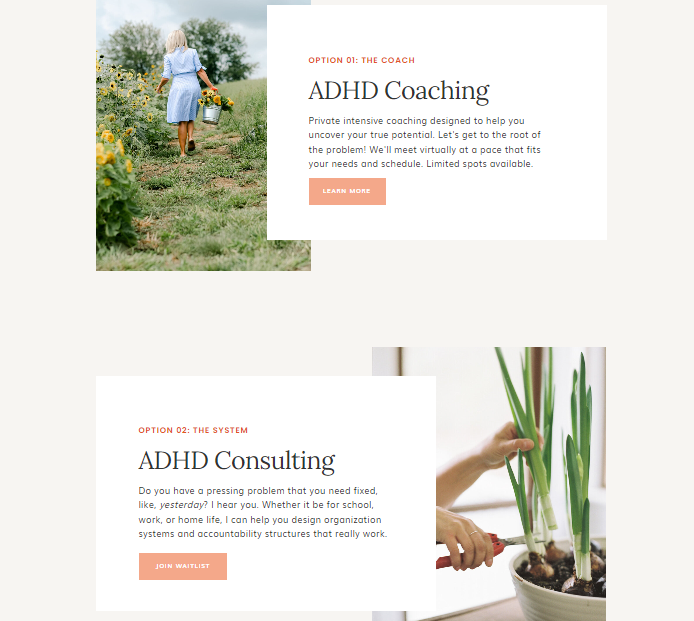
Your offers deserve a summary section on your homepage—because visitors should be able to see at a glance what offerings you have—with a link to learn more on the Services page. Showcase your services without your audience scrolling into the depths of your website to find them.
Make it easy for people to know what you do, whether that’s getting to know you, finding out more about your offerings, or reaching out to you.
6. Featured section
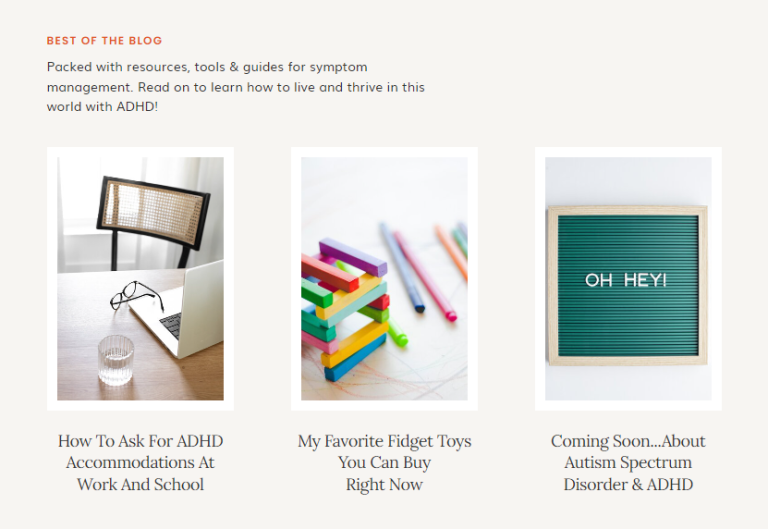
Your homepage is a collection of links, so visitors can access other important pages on your website. This featured section allows you to feature pages or posts on your website that you want them to check out.
Not every visitor who lands on your site will add something to their cart or head straight to your Contact page. Most of them would want to take a “look around” first.
This is why it’s okay to lead them to other pages that give them a glimpse of how much you know your stuff, such as your blog, podcast, or resource section.
7. Lead gen opt-in

This refers to sign-up forms or embedded resources you put on your homepage to collect subscribers or generate leads.
If you’re interested in list building, this is the part to pin your freebie.
The homepage and blog page get the largest amount of traffic on a website, so take advantage of this traffic by adding a list-building element for visitors to opt in and become an exclusive member of your community.
8. Final CTA

A final call-to-action (CTA) should be on your homepage as a compelling conclusion that prompts them to take action.
You don’t want them to browse your home page only to get to the bottom and be stranded for what to do next.
A final CTA is important for not just your homepage but also every page of your site. You should never end any copy asset you share without a call to action.
In Summary: How to Write Homepage Copy That Converts
With this guide above, you have a go-to homepage copy template you can swipe to write yours.
Want a DIY template complete with proven templates and a step-by-step tutorial to write your website?

Easy Website Copy Template
Blank screen blues? Not anymore. This plug-and-play website copy template gives you the words, the flow, and the strategy to finally nail your message all by yourself.”
And if you’d like your dream website copy done for you, check out my website copywriting solution to start your project.
